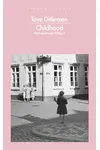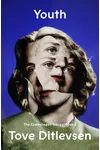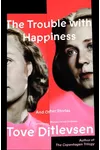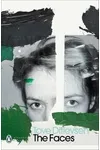Picture a Danish poet who turned her turbulent life into raw, lyrical prose—meet Tove Ditlevsen! Born in Copenhagen’s gritty Vesterbro in 1917, she became one of Denmark’s most beloved authors, weaving tales of childhood, addiction, and female identity. Her unflinching honesty and poetic style captivate readers, making her a literary gem rediscovered worldwide.
Ditlevsen’s life wasn’t easy—poverty, troubled marriages, and substance abuse shaped her story. Yet, through 29 books, including her masterpiece, The Copenhagen Trilogy, she transformed pain into art. Ready to dive into her world? Let’s explore how this working-class dreamer became a literary icon.
The Making of Tove Ditlevsen
Tove Ditlevsen grew up in Copenhagen’s Vesterbro, a working-class neighborhood where dreams often clashed with reality. Born to a socialist father and a mercurial mother, young Tove found solace in words, scribbling poems by age ten. Her father scoffed at her ambition, insisting “a girl can’t be a poet,” but Tove’s determination proved him wrong. Leaving school after eighth grade, she took odd jobs—maid, nanny, office worker—while secretly honing her craft.
At 22, she published her first poetry collection, Pigesind, defying gender norms and catching the eye of literary circles. Marrying Viggo Møller, an editor 30 years her senior, gave her a foothold in the literary world, but her hunger for independence and creativity drove her forward. Thus began a career that would redefine Danish literature.
Tove Ditlevsen’s Unforgettable Stories
Ditlevsen’s work spans poetry, novels, short stories, and memoirs, all marked by her raw honesty and lyrical prose. Her most celebrated work, The Copenhagen Trilogy (Childhood, Youth, Dependency), is a gut-punch of autofiction. It traces her journey from a misfit child to a famous poet battling addiction. The trilogy’s final volume, Dependency, titled Gift in Danish (meaning both “marriage” and “poison”), captures her descent into opioid addiction with haunting clarity.
Her novel Barndommens gade (The Street of Childhood) paints a vivid picture of Vesterbro’s struggles, blending nostalgia with stark realism. Poetry like Blinkende Lygter (Flickering Lights) brought her popular success, its title inspiring a 2000 Danish film. Ditlevsen’s style—direct, confessional, and poetic—explores female identity, loss, and the cost of artistic ambition, making her a pioneer of modern autofiction.
Short stories in collections like The Trouble with Happiness reveal the quiet despair of mid-century Copenhagen life. Her ability to distill complex emotions into simple, beautiful language resonates across generations, earning comparisons to Elena Ferrante and Virginia Woolf.
Why Tove Ditlevsen Matters
Tove Ditlevsen’s impact transcends Denmark. Dismissed in her lifetime by some critics as “just” a working-class female writer, she’s now hailed as a literary trailblazer. Her fearless exploration of women’s roles—daughter, wife, mother, artist—feels strikingly modern, sparking discussions on feminism and mental health. The Copenhagen Trilogy, translated into 25 languages since 2020, has ignited “Tove fever” globally, especially among young women drawn to her authenticity.
In Denmark, she’s required reading in schools, and her work has inspired films, plays, and music. Posthumously, she won acclaim, with readers voting her work a “Danish book of the century” in 1999. Ditlevsen’s legacy lies in her courage to bare her soul, proving that even the darkest stories can illuminate the human condition.
- Born: December 14, 1917, Copenhagen, Denmark
- Key Works: The Copenhagen Trilogy, Barndommens gade, Blinkende Lygter
- Awards: De Gyldne Laurbær (1956), Ministry of Culture’s Children’s Book Prize (1959)
- Died: March 7, 1976
Snag The Copenhagen Trilogy and dive into Tove Ditlevsen’s haunting, poetic world! Her stories will linger long after the last page.




